![]()

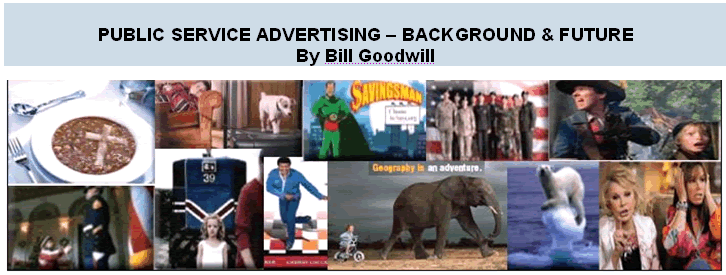
The Federal Communications Commission (FCC) defines a PSA as "any announcement for which no charge is made and which promotes programs, activities, or services of federal, state, or local governments (e.g., recruiting, sale of bonds, etc.) or the programs, activities or services of non-profit organizations (e.g., United Way, Red Cross blood donations, etc.) and other announcements regarded as serving community interests, excluding time signals, routine weather announcements and promotional announcements."
In non-government speak, PSAs are messages in the public interest disseminated by the media without charge.
Early Beginnings
The first entity to use PSAs that more closely resemble modern messages was the U.S. government. During the Civil War, the government sold bonds via newspaper advertisements provided without charge and placed throughout the North to raise money in support of the war. The device was so effective that the national bond sales have been credited with demonstrating “what advertising could do” and resulted in the first national ad campaigns for baking powder, soap and railroad travel, thus launching the commercial advertising industry. 1
The first non-governmental ads that could be considered PSAs appeared
after the turn of the century. In the early 1900s ads were run free
by newspapers to dramatize the outrages of child labor.
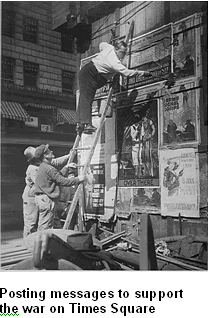 The
National Child Labor Committee was chaired by Felix Adler, the early
welfare leader who stacked his Board of Directors with newspaper publishers
who would support his cause.2 Thus was also born perhaps
the first example of media co-branding.
The
National Child Labor Committee was chaired by Felix Adler, the early
welfare leader who stacked his Board of Directors with newspaper publishers
who would support his cause.2 Thus was also born perhaps
the first example of media co-branding.
When the U.S. was drawn into World War I in 1917, the Federal Committee of Public Information was created to encourage public support and dramatize the reasons for “why we fight.” Within the Committee, a Division of Pictorial Publicity was formed by the artist Charles Dana Gibson, who recruited the leading illustrators of the time to create posters building support for the war. James Montgomery Flag drew the assignment to create the “Uncle Sam Needs You” poster shown below, which may be one of the most famous and iconic posters of all time. Hundreds of other posters which have become part of the national memory were produced by this group. All work was produced free including the design, printing and placement. 3
At that same time President Woodrow Wilson established the Committee on Public Information, which played a major role in convincing the public to support the war effort. George Creel, a Kansas City journalist whom Wilson appointed to chair the Committee, described its mission as the “propagation of faith.”4
With the help of people drawn from the advertising industry, the Committee created several major campaigns. Among them were:
-
The War Savings Stamps drive that urged the public to "save the thoughtless dollars being wasted” through self-indulgence, while soldiers sacrificed themselves on the battlefields of war.
- The Red Cross campaign that asked citizens to join the organization,
which was personified in the ads in a Madonna-like image entitled
the "Greatest Mother in the World."
- The Selective Service campaign that supported draft registration.
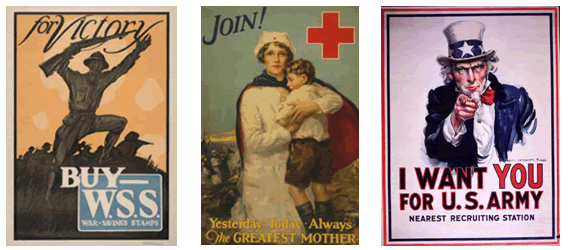
Early Seeds of Public Relations
Another result of the Creel Committee was using what were called “public relations agents” who left a lasting legacy in the world of public marketing. Their work demonstrated the power of mass communication by creating a new breed of professionals whose job was to manipulate the “symbols of public opinion” to promote civic causes. This committee laid the foundation for using publicity and advertising to make “nationalism an American religion.5
Another interesting theme about these early efforts to influence public opinion was the use of symbols. There were those created by the political parties of the 19th century – in which “potent images of the soldier-statesman, the log cabin common man, the rough-and-ready frontiersman and the political sage” were used as tools to achieve popular support. These included the “Herald/Angel,” a female figure shown sometimes with wings or blowing a trumpet.6
According to Robert Jackall and Janice Hirota, who researched the history of public service advertising, these powerful images and calls to action were by no means the only factors in uniting the public on the war effort, but they did help mold public opinion. Today symbols also play an important role in campaigns dealing with drunk driving, cancer and AIDS.
 PSAs
played an important part in WWII as well, and became more formalized.
Radio broadcasters and advertising agencies offered their skills and
facilities in support of the war effort leading to establishment of
the War Advertising Council, which became the official home front propaganda
arm of the Office of War Information. Print, outdoor advertising and
especially radio became the carriers of such messages as "Loose
lips sink ships," "Keep 'em Rolling" and other messages
supporting the purchase of War Bonds.7
PSAs
played an important part in WWII as well, and became more formalized.
Radio broadcasters and advertising agencies offered their skills and
facilities in support of the war effort leading to establishment of
the War Advertising Council, which became the official home front propaganda
arm of the Office of War Information. Print, outdoor advertising and
especially radio became the carriers of such messages as "Loose
lips sink ships," "Keep 'em Rolling" and other messages
supporting the purchase of War Bonds.7
In one of the most far-reaching of the war campaigns, Rosie the Riveter asserted, "We Can Do It!" She became America's wartime icon for women willing to roll up their sleeves and work in factories as a part of the war effort. With able-bodied men marching off to war, six million women moved into the workforce to replace the men and help manufacture war materiel. Another wartime campaign, Loose Lips Sink Ships, urged Americans to keep quiet about information that might be useful if heard by the enemy. At a time when Japanese and German submarines patrolled the US coastline, there was great need for secrecy concerning Navy maneuvers, troop movements, and other military matters.8
After the war, the tradition of making free space and radio time available for good causes continued. The public concerns of the 1920’s were mostly those dealing with health, leading up to the Great Depression in the early 30’s which spawned a plethora of public service messages on behalf of the Works Progress Administration, the National Recovery Act and the Civil Conservation Corps.
The practice of volunteering free media time and space had also become institutionalized and the War Advertising Council was renamed the Advertising Council. With the advent of television in the arly 50’s public service messages could be seen as well as heard.
 Soon the public was seeing messages from "Smokey Bear" and
other famous Ad Council campaigns such as "A Mind Is a Terrible
Thing to Waste," which raised millions for the United Negro College
Fund, and the American Cancer Society's "Fight Cancer with a Checkup
and a Check," which raised public awareness and funds.
Soon the public was seeing messages from "Smokey Bear" and
other famous Ad Council campaigns such as "A Mind Is a Terrible
Thing to Waste," which raised millions for the United Negro College
Fund, and the American Cancer Society's "Fight Cancer with a Checkup
and a Check," which raised public awareness and funds.
Controversy Over True Motives
Another issue which received a lot of PSA support at that time was environmental protection, and then, like now, attempts to encourage the public to be better environmental stewards were controversial.
A national nonprofit public education organization named Keep America Beautiful, Inc. (KAB) was formed in 1953 with the mission of "engaging individuals to take greater responsibility for improving their local community environments." KAB's first PSA focused on litter prevention. It partnered with the Ad Council in 1960 to produce a campaign focused on the harmful environmental effects of litter and other forms of pollution.
 Ten
years into the KAB-Ad Council partnership, in 1971, an Italian actor
playing the part of a Native American (who became known as "The
Crying Indian") or “Iron Eyes Cody” appeared in an
anti-litter commercial. As he looks over a polluted landscape and sheds
a tear, a voice-over says: "People start pollution. People can
stop it." This powerful commercial won many awards, including being
named one of the top 100 advertising campaigns of the 20th century by
Advertising Age. Its success inspired other environmental messages
from other groups as well.
Ten
years into the KAB-Ad Council partnership, in 1971, an Italian actor
playing the part of a Native American (who became known as "The
Crying Indian") or “Iron Eyes Cody” appeared in an
anti-litter commercial. As he looks over a polluted landscape and sheds
a tear, a voice-over says: "People start pollution. People can
stop it." This powerful commercial won many awards, including being
named one of the top 100 advertising campaigns of the 20th century by
Advertising Age. Its success inspired other environmental messages
from other groups as well.
However, this campaign proved to be quite controversial. Shortly after its debut, various journalists wrote articles pointing out aspects that might not be immediately apparent to viewers. They noted that the tagline "People start pollution; people can stop it" focuses the responsibility for environmental pollution solely on individuals.
John McDonough, writing in Advertising Age, pointed out that the Ad Council's advisory panel for the campaign included some of the country's biggest alleged polluters—Allied Chemicals, Bethlehem Steel, American Can, and US Steel—and that the original campaign was funded by American Can. McDonough wrote, "The company may have loved the pre-Columbian landscape as much as the next guy—and delighted in having Iron Eyes letting people know it. But it consistently opposed state legislation designed to curb litter through container refund-deposit. They felt that the KAB-Ad Council campaign was actually a public relations effort on the part of the container industry to cover its opposition to refund and deposit programs.9
This campaign and the controversy surrounding it suggest that public service campaigns, like the commercial advertising campaigns on which they are modeled, are often meant to serve the vested interests of their sponsors.
The Greenpeace Movement
One organization that has certainly been controversial, but not because they promote vested interests is Greenpeace, the international environmental protection organization. Since their founding, they have combined aggressive and sometimes hostile actions against polluters with highly imaginative ways to engage the public. Their PSAs, mostly produced in-house, have great production values and appeal to a visually oriented, hip culture, which is their primary audience. http://www.greenpeace.org
Enter the Fairness Doctrine
One demonstration of PSA effectiveness came in 1969. Two years earlier, a federal court upheld the FCC's application of the Fairness Doctrine to cigarette advertising on radio and television, and ordered stations to broadcast "a significant amount of time" for anti-smoking messages.
This effectively meant one PSA for every three tobacco commercials. The PSAs proved so effective that smoking rates began to decline for the first time in history. Tobacco industry withdrew all cigarette advertising on radio and TV, and Congress made such advertising illegal after 1971. In further support of the success of the PSAs, with the passage of the law preventing cigarette ads, the bulk of the anti-smoking messages disappeared as well, and cigarette consumption rose again for a while. On balance, however, public health professionals credit the PSAs with having saved many millions of lives by initiating the decline in American smoking. 11
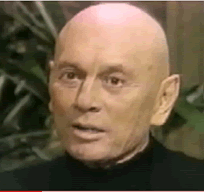 Perhaps
the most famous anti-smoking PSA was done by Yul Brenner before his
death in 1985 from lung cancer, which you can view at:
http://www.youtube.com/watch?v=JNjunlWUJJI
Perhaps
the most famous anti-smoking PSA was done by Yul Brenner before his
death in 1985 from lung cancer, which you can view at:
http://www.youtube.com/watch?v=JNjunlWUJJI
Nine months before he passed away, he gave an interview on Good Morning America. In the interview he mentioned wishing to make an anti-smoking commercial. After his death part of the interview was turned into a PSA by the American Cancer Society and left a lasting impression on everyone who ever saw it.
 Later
“The Truth” campaign was launched which producers claim
is the largest national youth-focused anti-tobacco education campaign
ever conceived.
Later
“The Truth” campaign was launched which producers claim
is the largest national youth-focused anti-tobacco education campaign
ever conceived.
It is designed to engage teens by exposing Big Tobacco's marketing and manufacturing practices, as well as highlighting the toll of tobacco in relevant and innovative ways. http://www.protectthetruth.org/truthcampaign.htm
Another famous anti-smoking campaign was the Campaign for Tobacco Free Kids http://www.tobaccofreekids.org/ which used paid print ads and earned media as the primary media vehicles to point out the dangers of smoking among the young.
Changes in Network PSA Policies
Historically, the "big four" broadcast networks had always fed externally produced PSAs to their affiliates which in turn could decide to air them or pre-empt the feed by using paid commercials, locally produced PSAs or other programming. With a desire to brand their own PSAs, the networks decided to begin using characters from their own shows to deliver social messages, and thus getting externally produced PSAs on the networks or to even get them to feed them to their member stations became nearly impossible.
At the same time this was occurring, local stations were under additional pressure from community-based organizations seeking airtime and many stations created their own PSAs in an effort to meet local needs. A number of articles on our PSA Research Center provide further background on the importance of localism which can be accessed at: http://www.psaresearch.com.com .
In the 1980s, a number of broadcast TV stations went public or changed hands. The resulting debt load, mounting costs, as well as increased competition from other media, resulted in demands for greater profitability. Accordingly, most unsold airtime was devoted to promoting the station or network, and at the same time, deregulation meant less government oversight in favor of a marketplace model.
At about this same time concerns were growing about the illicit drug problem. The Advertising Media Partnership for a Drug-free America (PDFA) was created by a group of media and advertising agency executives, spearheaded by Capital Cities Broadcasting Company, then completing the take-over of ABC.
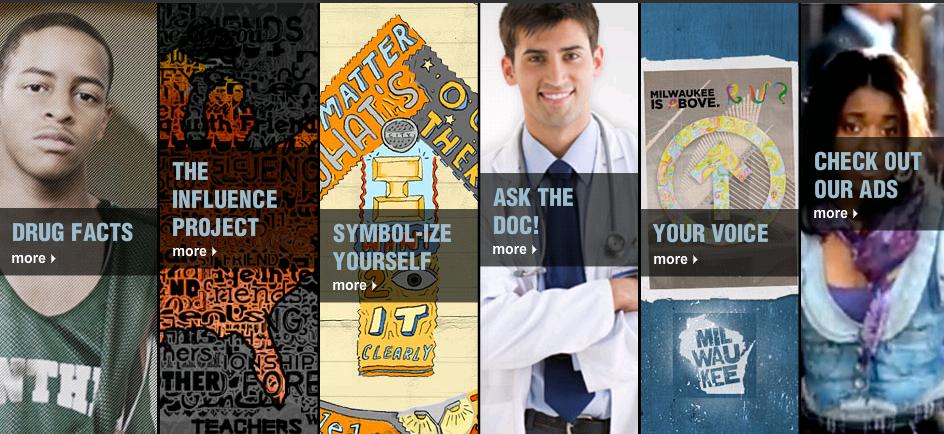
Rallying unprecedented support, the organization mounted the largest public service campaign ever. Indeed, at its height, with more than $365 million a year worth of print lineage and airtime, it rivaled the largest commercial advertising campaigns.12
 In
its famous campaign often called the “Frying
Egg” PSA, the visual shows an egg dropped into a pan with
the voice over saying: "This is your brain." Once the egg
starts frying, the voice over continues "This is your brain on
drugs. Any questions?"
In
its famous campaign often called the “Frying
Egg” PSA, the visual shows an egg dropped into a pan with
the voice over saying: "This is your brain." Once the egg
starts frying, the voice over continues "This is your brain on
drugs. Any questions?"
Perhaps one of the most memorable campaigns in PSA history, it also demonstrated that you do not need expensive props, talent, and filming in Malibu to create a powerful message. In more recent years, the PDFA has created a much broader array of PSA messages to deal with the scourge of drugs in its many forms, including marijuana, amphetamines, cocaine and others, aimed at a much wider demographic.
The other hallmark of the PDFA was its use of research before, during and after campaign launch. Consistent with contemporary thinking about the nature of social marketing, the campaign was solidly grounded in McGuire's13 paradigm of behavioral change:
Awareness of a problem by a number of people will result in a smaller number who undergo a change of attitude toward the problem. An even smaller number from this second group will actually change their behavior.
Paid vs PSA
One of the ongoing questions in the world of public service advertising has always been…..if you buy media time and space, can you also solicit PSAs, and will the media use PSAs from an organization, knowing they are also using paid advertising? The short answer is yes…but the longer answer requires much more explanation.
There was a time when buying time and space would poison the well among the media who wanted to donate their scarce inventory to only those non-profits which could not afford to buy the time. Then along came an organization called ONDCP, which stands for the Office of National Drug Control Policy.
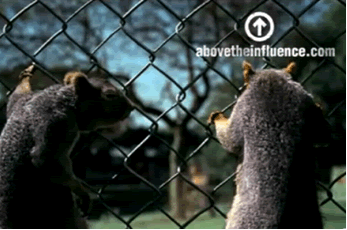 Limited
space in this backgrounder does not permit us to go into the details
of the ONDCP’s mission, but you can go to:
http://www.mediacampaign.org/
Limited
space in this backgrounder does not permit us to go into the details
of the ONDCP’s mission, but you can go to:
http://www.mediacampaign.org/
faqs.html#ma2 for a detailed description of their mission and goals.
In 2000, the FCC sent inquiries to five major television networks about ONDCP's practice of offering millions of additional advertising dollars to networks that embedded anti-drug messages in their programming. Congressional hearings were held and the FCC ruled that the networks should have identified the Office of National Drug Control Policy as the sponsor of the television programs. In the spring of 1998, the ONDCP began to develop an accounting system to decide which network shows would be valued and for how much. Receiving advance copies of scripts, they assigned financial value to each show's anti-drug message. Then they would suggest ways that the networks could increase the payments they would get.
Running the campaign for the ONDCP was Alan Levitt, who estimated that between 1998 and 2000 the networks received nearly $25 million in benefits.14 Using public funds appropriated by Congress, a unique feature of the ONDCP Campaign is a “Media Match” component, wherein for every ad purchased by ONDCP, the media outlet must provide a match ad for free, and to date the campaign’s Media Match program has generated $1.22 billion in incremental media value since its inception.15
Many broadcast stations adopted a policy of accepting the paid funds from ONDCP, and thus the former policy of either accepting paid funds or relying solely on PSAs was overturned in favor of what are typically called “hybrid” placements.

PSAs and Drunk Driving
While McGuire's paradigm of behavioral change referenced above may seem very obvious, the anti-drunk driving PSA campaigns are a good case in point that demonstrate how difficult it is to change behavior towards a social problem. In the late 1970’s the National Highway Traffic Safety Administration launched a national campaign to reduce drunk driving.
Grey Advertising, under contract to the government, developed the famous theme, ‘Friends Don’t Let Friends Drive Drunk,” which was the positioning line for numerous national PSA campaigns in all media. The author of this article was the Deputy Director on this program, which is why there is a fair amount of detail on how it worked.
 State and local highway safety representatives were engaged in the campaign;
alcohol/safety workshops were held to train other trainers; state and local police
provided increased enforcement; and there was a public education component.
Yet in the early years the fatalities due to alcohol remained fairly consistent. What
changed the dynamic was the advent of Mothers Against Drunk Driving
(MADD) and many offshoots to reach youth, including – Students Against Drunk
Driving (SADD) – which marshaled local public opinion and encouraged
tougher sentences for repeat offenders.
State and local highway safety representatives were engaged in the campaign;
alcohol/safety workshops were held to train other trainers; state and local police
provided increased enforcement; and there was a public education component.
Yet in the early years the fatalities due to alcohol remained fairly consistent. What
changed the dynamic was the advent of Mothers Against Drunk Driving
(MADD) and many offshoots to reach youth, including – Students Against Drunk
Driving (SADD) – which marshaled local public opinion and encouraged
tougher sentences for repeat offenders.
Over time, drunk driving became a very serious crime, because the social forces were all aligned against it. Also, policy makers learned to use approaches that were not overly restrictive. Instead of telling people to not drink at all…they were telling the public to drink responsibly, or if drinking is going to occur, then appoint a designated driver.
This was very smart strategy, recognizing that you are never going to get everyone in society to change their behavior, so pick the low hanging fruit and let change happen over time.
Now, some 40 years later, the deaths due to alcohol related incidents on our highways have been cut in half. This demonstrates the time it takes for a problem to sink into the public psyche to the point people will change their behavior. It also illustrates the fact that you are never, ever going to get everyone to change their behavior in the desired direction, because some people will do things they know are harmful simply because they do not care, or they do not want people preaching to them about their own personal lives.
Impact of Hollywood

Another innovative aspect of the anti-drunk driving campaign was to encourage TV show producers to weave drunk driving prevention messages and designated driver references into popular TV program storylines, such as Cheers, L.A. Law, and The Cosby Show. While often so subtle that the viewer may not even know that these storylines were crafted to have their intended effect, they demonstrated the power of the entertainment industry to change attitudes and social norms.
In fact, this tactic of engaging Hollywood in addressing serious social problems led to the formation of the Entertainment Industries Council (EIC) in 1983. The EIC encouraged high-profile film, television and recording stars to create PSAs with positive messages about social problems, working with producers, writers and directors to incorporate social messages into entertainment programming. EIC also employs a slightly different model via its Picture This program whereby they bring together local broadcasters, elected officials and other stakeholders from the community to address topical social issues.These can be extremely effective approaches, because they provide a win-win opportunity for both the stations and the other stakeholders working with them to address important social problems.The “Total Station Project”
The other major development in innovative media approaches combining PSAs and other forms of programming is referred to as the Total Station Project. In this model, the Community Affairs Department at broadcast TV stations adopts a public service theme, and working with other departments at the station coordinate PSAs with station editorials, heavily promoted public affairs programs, talk show appearances by the campaign spokesman, remote broadcasts at special events and features in local news broadcasts.
PSAs Promoting Religion
PSAs have been used to promote a variety of relgious issues, ranging from the Catholic Communication Campaign designed to promote family values; http:/www.usccb.org/catholic-giving/opportunities-for-giving/catholic-communication-campaign/ the Catholic Campaign for Human Development, aimed at reducing child poverty; www.usccb.org/cchd/ the long-running Homefront campaign sponsored by the Mormon Church www.freerepublic.com and campaigns to influence the public in different ways sponsored by the Lutheran, Presbyterian and Methodist churches.
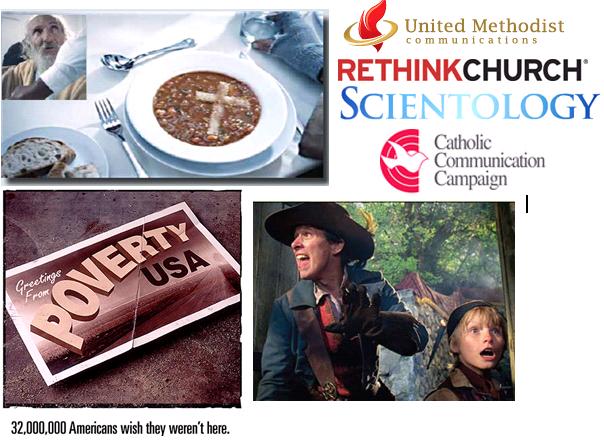
PSAs and Recruiting
 Another way PSAs were used in contemporary times was to recruit various target
audiences as volunteers. From the time it was formed in the Kennedy
Administration, the Peace Corps used PSAs exclusively to recruit young
people to help ameliorate poverty around the world.
Another way PSAs were used in contemporary times was to recruit various target
audiences as volunteers. From the time it was formed in the Kennedy
Administration, the Peace Corps used PSAs exclusively to recruit young
people to help ameliorate poverty around the world.
Our firm had the privilege of working with the Peace Corps for seven years, and during this time we helped them generate 782,000 leads, which in turn resulted in 58,558 applications, 21,456 invitations to join the Peace Corps, and 18,028 Volunteers who actually joined. While there was an active direct mail program and college recruiting efforts during this time, PSAs contributed to the lion’s share of recruiting leads and proved that PSAs were an effective direct response mechanism.
The Military ServicesHistorically, the military services have used PSAs to support their paid efforts in an attempt to recruit more qualified applicants to our armed forces. Some military services such as the Marine Corps tend to use the same creative for both paid and PSAs. Other services such as Air Force have a bifurcated strategy, creating separate messages for each different approach.

As noted above, PSAs have not only been an effective mechanism to extend
the reach of other marketing efforts for our military; they also have
helped to generate leads, because PSA messages tend to be more credible.
Also, since the time and space is free, the cost benefit of PSAs tends
to be significant. For a case history on how PSAs have been used to supportmilitary
recruiting, go to:
http://www.goodwillcommunications.com/gc_support_client_corner-frameset.asp?page=gc_support_client_corner-military.asp
Animal Protection - PSAs & PETA
One of the most controversial non-profits is PETA - People for the Ethical Treatment of Animals - the largest animal rights organization in the world. PETA uses famous celebreties in many of its PSAs and other forms of communication. They are also well known for their in-your-face tactics to protest the use of animal fur in clothing.
It is important for all PSA producers to understand that while throwing
paint on someone wearing fur may be good streat theater, that type of approach, when used as a PSA is
never going to get on the air. First, it is too controversial and more importantly could dissuade local retailers from
advertising on stations, which is their lifeblood. In the case of PETA, they tend to use their more controversial approaches
in print ads and videos posted to popular internet sites such as Yahoo and You Tube. For more information go to:
www.peta.org
The NCSA Program
Another hybrid arrangement is known as the “NCSA” program which stands for Non-Commercial Sustaining Agreement. In this arrangement, funds are paid to state broadcast associations which can use the funds for any of their programs such as youth scholarships for students in their communities. On behalf of the “sponsor,” the state broadcast association then negotiates PSA placements that typically result in much better reach and frequency than what would result from strictly PSA placements and bonus spots are often part of the arrangement. The Army National Guard and U.S. Coast Guard both have used this approach.
Impact of Videos and Social Media
One more fairly recent development is the use of video clips to convey various types of messages. The number of videos posted to You Tube and other mainstream sites is astronomical and many of these are messages in the public interest. However, instead of lavish productions created by advertising agencies, they are being churned out by creative people with low-cost cameras and editing software, then posted for free on the Internet. PSA contests and crowd sourcing are also new tools being used by non-profits to engage their audiences in their issues and campaigns. Most social media sites have special interest sections where people who want to promote or support certain causes can gather to share success stories, donate, build bigger communities, etc.
Given the hundreds of PSA campaigns that are in circulation at any given time, and the dozens of sponsoring organizations, it is not possible to mention all the great campaigns being produced year in and year out on behalf of great causes.
As for the future for PSAs, it remains bright, because PSAs are proven to be a very viable mass communication technique, and the media clearly understand they play a vital role in making their communities – and thus our nation at large – a better place in which to live. However, as we have always stated in the past – PSAs are not a panacea. Organizations need to use a variety of mass communication techniques to address constantly shifting audiences and a media landscape becoming more complex by the day.
About the author: Bill Goodwill is CEO of Goodwill Communications, a firm specializing in PSA distribution and evaluation. He has nearly 40 years of PSA experience working with 150 national organizations to distribute over 700 national PSA campaigns.
1 Advertising in America, the First 200 Years
2 Ibid
3 Ibid
4 William O’Barr, Advertising & Society Review
5 Smoky, Rosie and You – The History and Practice of Marketing Public Programs
6 Ibid
7 William O’Barr, Advertising & Society Review
8 Ibid
9 Ibid
10 Ibid
11 Ibid
12 Wkipedia
13 Prof. William McGuire of Yale University
14 Wikipedia
15 ONDCP website